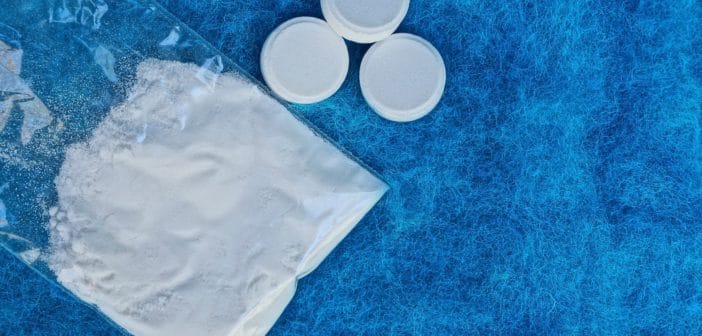 For law enforcement and drug counselors, keeping up with the ever-evolving world of synthetic drugs is an endless game of cat and mouse. When one substance or ingredient is detected and outlawed, backroom chemists can tinker with a formulation, changing is slightly to make an analogue that is technically not illegal (although legislators are trying to catch up with wider blanket bans on psychoactive substances).
For law enforcement and drug counselors, keeping up with the ever-evolving world of synthetic drugs is an endless game of cat and mouse. When one substance or ingredient is detected and outlawed, backroom chemists can tinker with a formulation, changing is slightly to make an analogue that is technically not illegal (although legislators are trying to catch up with wider blanket bans on psychoactive substances).
Despite the gray area of legality, synthetic drugs are extremely dangerous. This has been shown clearly in the United States, where fentanyl and its analogues are responsible for tens of thousands of deaths each year. However, opioids aren’t the only drugs being made synthetically. Sometimes known as “legal highs” or “new psychoactive substances” these synthetic drugs are still every bit as dangerous — if not more so — than drugs that are explicitly banned by the law.
Although there might be decades of research about the health effects of drugs like heroin, cocaine or amphetamines, there is little research on synthetic drugs. Still, these so-called legal highs can still present the same symptoms as more traditional illicit drugs, and require treatment in a rehab clinic.
Here are some of the common synthetic drug formulations and the signs and symptoms that someone might be using them to get a “legal high.”
Synthetic Cannabinoids
Street Names: Spice, K2, Black Mama, Annihilation, Herbal Incense
Description: Until relatively recently, Spice was a common sight in some corner stores and smoke shops. Spice generally features a blend of tobacco or other dried plants that are sprayed with chemicals that cause psychoactive effects. Synthetic cannabinoids can also be sold as liquid to be used in vapes.
Symptoms: Although they are sometimes marketed as all natural or safe, Spice is very dangerous, arguably more so than marijuana. According to the National Institute on Drug Abuse, testing shows that the chemicals used in spice are made in labs and not safe for human consumption. Like the active ingredients in marijuana, these chemicals act on the cannabinoid receptors in the brain, but some research indicates that they bind even more strongly. This can amplify the effects of the drug, including negative effects like psychosis, paranoia and hallucinations. Synthetic cannabinoids have also been linked to suicide, violence and cardiovascular effects.
Synthetic Cathinones
Street Names: Bath salts, Flakka, Bliss, Cloud 9
Description: Synthetic Cathinones are a class of synthetic stimulants. Just as synthetic cannabinoids are meant to mimic the effects of the marijuana plant, synthetic cathinones are meant to mimic the effects of khat, an African shrub that is used as a stimulant. And, just like synthetic cannabinoids, the effects of synthetic cathinones are much strong — and more dangerous — the the plant they are meant simulate.
Synthetic cathinones are sometimes sold in smoke shops under the guises of not being for human consumption. Instead, they’re labeled as bath salts, plant food, jewelry cleaner or phone screen cleaner.
Symptoms: When they are ingested, smoked or injected, synthetic cathinones act on the body in ways that are similar to cocaine, amphetamines and other stimulants. However, they’re much more potent: up to ten times as powerful as cocaine, according to one study cited by the National Institute on Drug Abuse. People who have taken synthetic cathinones can experience paranoia, hallucinations, panic attacks and delirium.
Synthetic Hallucinogens
Street Names: N-bomb, legal acid, smiles
Description: Synthetic Hallucinogens act on the seratonin receptors in the brain. They mimic the effects of hallucinogenic drugs like LSD, but are much more powerful. They are sold and taken in a variety of ways, including as powders, liquids, on blotter paper or as edibles.
Symptoms: Like most synthetic drugs the research around synthetic hallucinogens is limited, but suggests that they are very dangerous. According to the National Institute on Drug Abuse people have died from taking synthetic hallucinogens, and one scientific paper documented a suicide attempt after someone took a synthetic hallucinogen. Severe hallucinations can lead to panic in users.
Some people mistake synthetic drugs for being “designer drugs” that are safer than other illicit substances. However, this couldn’t be further from the truth. As the case study of a suicide attempt showed, even one-time use of synthetic drugs can have dire consequences. Because of this, it’s important that people who are using these drugs connect with a rehab clinic that can help them stop their use.
Get more information on Serenity Health on the website or on Twitter
Sponsored DISCLAIMER: This is a paid advertisement for California Behavioral Health, LLC, a CA licensed substance abuse treatment provider and not a service provided by The Fix. Calls to this number are answered by CBH, free and without obligation to the consumer. No one who answers the call receives a fee based upon the consumer’s choice to enter treatment. For additional info on other treatment providers and options visit www.samhsa.gov.




